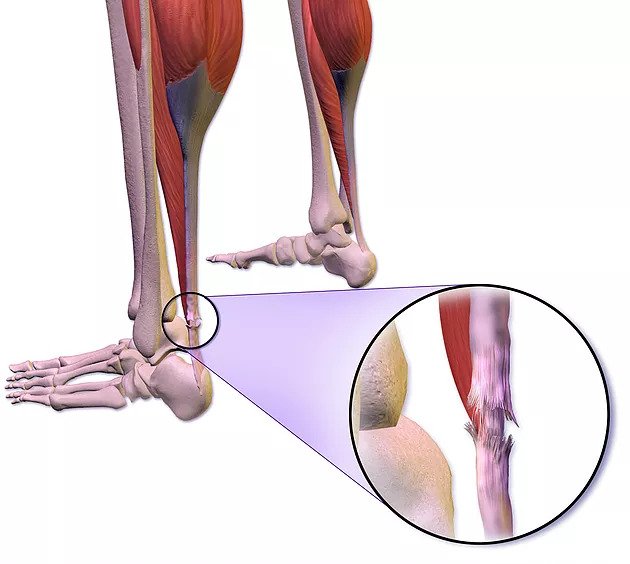If you are experiencing pain in the back of your ankle, heel or lower calf, you may have a problem with your Achilles tendon.
Tendons are tough bands of fibrous tissue, connecting muscles to bones. The Achilles is the thickest tendon in your body, connecting the muscles of the calf (soleus and gastrocnemius) to the back of your heel bone (calcaneus). The tightly packed fibres run in parallel, creating a strong, rope-like structure.
The Achilles tendon can withstand high loads- for example, running and jumping generates forces up to 8 times your body weight. However, these high forces combined with a poor blood supply means the Achilles tendon is particularly susceptible to injury.
Tendinopathy occurs when the frequency or intensity of forces exceed the ability of the tendon to repair itself. Initially, micro-tears in the tendon fibres can cause local swelling and pain. Over time, if left untreated, poorly healed micro-tears can create an increased risk of a complete tendon rupture.
Symptoms of tendinopathy include pain and swelling around the tendon and upper heel area. It’s usually worse when you first get up, and can feel very sore on movements such as standing on tip-toes, going up stairs or walking uphill.
You are more likely to develop Achilles Tendinopathy with:
-
Increasing age or weight
-
Starting a new sport
-
Increasing the frequency/ intensity of your training
-
Tight calf muscles and hamstrings
-
Chronic ankle instability
-
Biomechanical factors (such as a tight hip on one side) which affect the way you walk or run
Treatment
Tendons repair slowly, but with appropriate treatment, you can often make a full recovery. The first rule is to prevent further overstrain – so, for example, if you’ve recently upped the intensity of your training, decrease it immediately.
Sports injury specialist Marianne Carpenter at Applewood Osteopathy can provide you with advice and a tailored treatment plan suitable for your level of fitness. Treatment includes correction of any abnormal loading through your ankle, combined with a program of exercises to stretch tight calf and hamstring muscles, and to stabilise the ankles, knees, hips, pelvis and core.
The sooner you get started, the quicker you will start to feel better- so call today on 07791 959256

